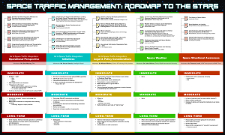Presentation Type
Paper (supporting PowerPoints may be added as Additional Files)
Location
Bass Auditorium
Start Date
26-2-2019 11:00 AM
Abstract
Flying faster, farther, longer and higher has always captured the public’s imagination. Yet there is a vast realm of airspace that remains unexplored, save for a handful of scientific and national security missions. It is a realm rife with extremes, where flights can reach multi-Mach speeds or stay aloft for months as they slowly circumnavigate the globe. It is a realm that lies high above the clouds, at the edge of space.
Recent breakthroughs in technology, fueled by a globalized economy and society’s appetite for information, have set the stage for routine commercial operations in this new realm. Companies, old and new, consider it an unexploited frontier, and are investing in ways to harness its potential. Until recently, few have contemplated how this assortment of operations will coexist where the air is thin and manned operations are the exception, not the rule.
Today’s air traffic management system was largely designed for manned fixed-wing aircraft performance and capabilities, not unmanned and lighter-than-air operations. As a result, existing flight rules (visual and instrument) which govern aircraft behavior, are likely to be ill-suited to these non-traditional operations. Therefore, attempting to retrofit current air traffic management practices and policies to safely accommodate increased new entrant activity may not lead to an optimal solution, given the anticipated increase in highly automated constellations of operations.
This paper will evaluate a range of options for providing air traffic management reflecting user expectations as set forth by the International Civil Aviation Organization Global Air Traffic Management Document.
Area of Interest
NAS Integration
Biographies
View bio for Jennifer Gentry
Framework for Evaluating Traffic Management Services in Higher Airspace
Bass Auditorium
Flying faster, farther, longer and higher has always captured the public’s imagination. Yet there is a vast realm of airspace that remains unexplored, save for a handful of scientific and national security missions. It is a realm rife with extremes, where flights can reach multi-Mach speeds or stay aloft for months as they slowly circumnavigate the globe. It is a realm that lies high above the clouds, at the edge of space.
Recent breakthroughs in technology, fueled by a globalized economy and society’s appetite for information, have set the stage for routine commercial operations in this new realm. Companies, old and new, consider it an unexploited frontier, and are investing in ways to harness its potential. Until recently, few have contemplated how this assortment of operations will coexist where the air is thin and manned operations are the exception, not the rule.
Today’s air traffic management system was largely designed for manned fixed-wing aircraft performance and capabilities, not unmanned and lighter-than-air operations. As a result, existing flight rules (visual and instrument) which govern aircraft behavior, are likely to be ill-suited to these non-traditional operations. Therefore, attempting to retrofit current air traffic management practices and policies to safely accommodate increased new entrant activity may not lead to an optimal solution, given the anticipated increase in highly automated constellations of operations.
This paper will evaluate a range of options for providing air traffic management reflecting user expectations as set forth by the International Civil Aviation Organization Global Air Traffic Management Document.



Comments
Visit the panel session NAS Integration Part 2: Suborbital and High Altitude Research